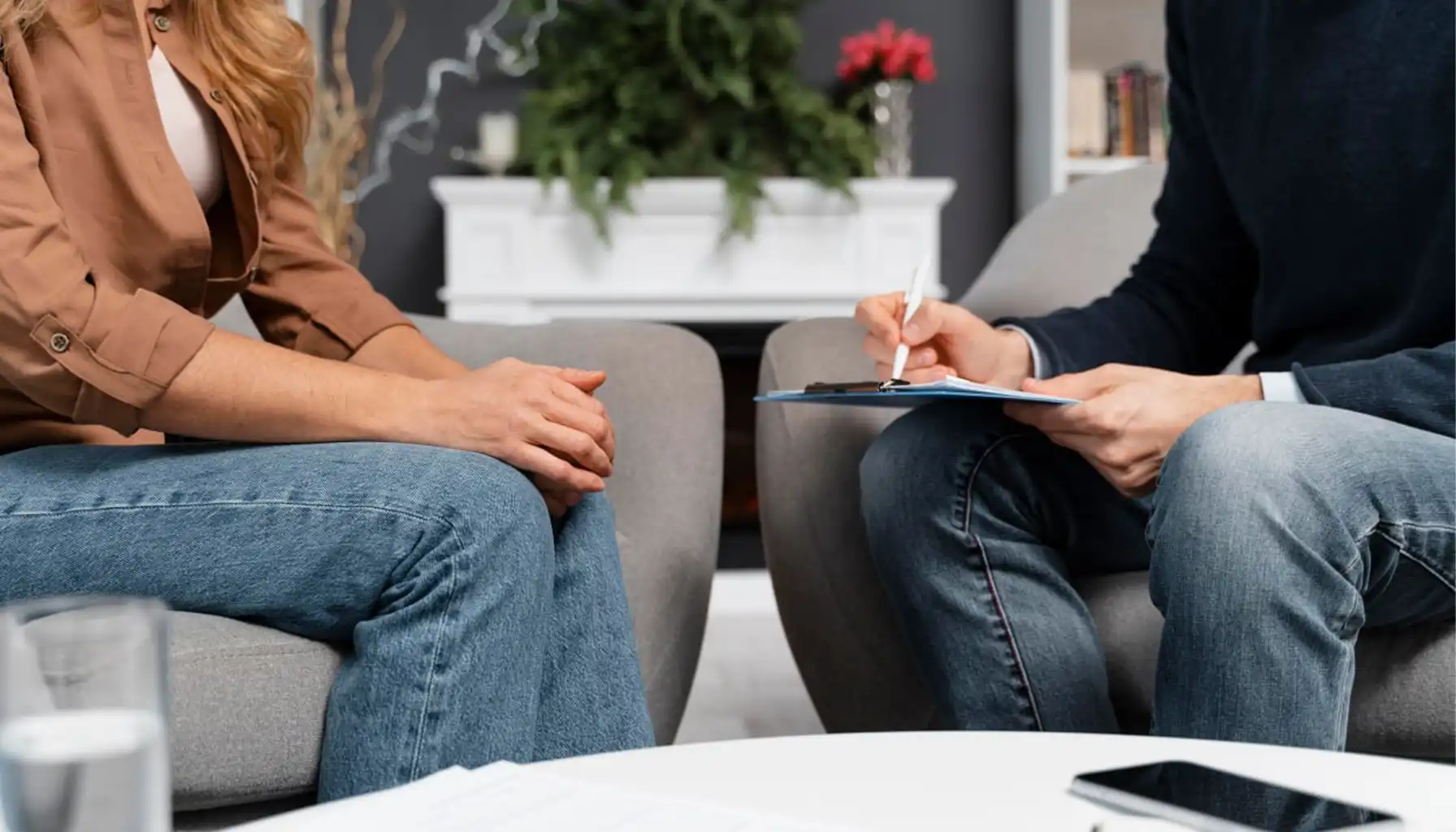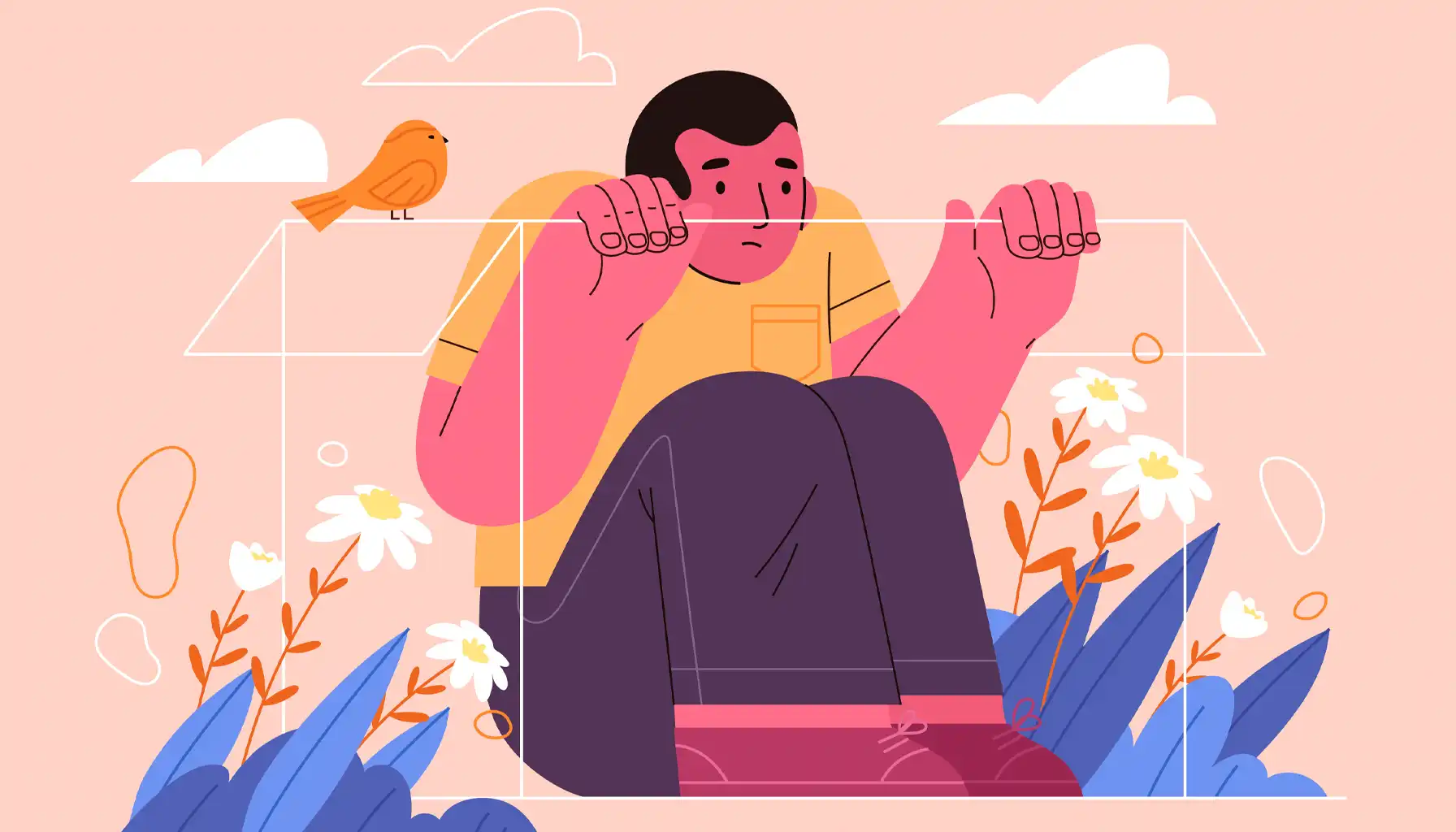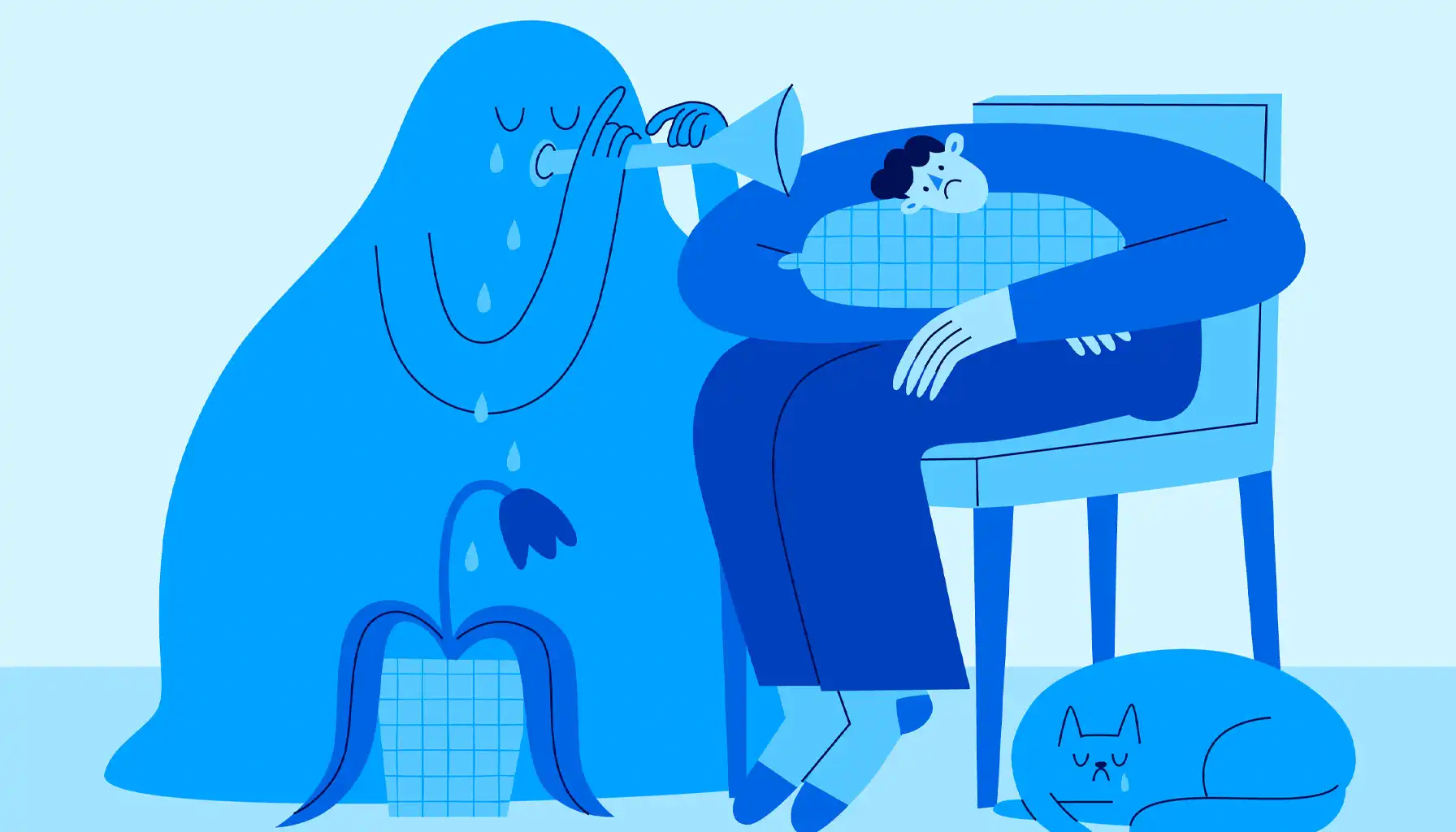When Fear Becomes Fear Itself: What Is Phobophobia?

Contents:
“The only thing we have to fear is fear itself.” – Franklin D. Roosevelt.
Sometimes, we, humans, may produce relatively sound responses, but occasionally, fear begins to haunt us without any visible threat. Being afraid of something is the most natural reaction that is meant to protect our lives from potential dangers, so as to stay safe and survive. This, however, may become a separate source of suffering if the fear becomes irrational or exaggerated.
One of the most unusual and equally intriguing phobias among the rest is phobophobia, which offers an experience of a paradoxical cycle, for a person should dread both their phobia and the sensations that come with it. Nonetheless, the level of distress is quite unusual – it does not arise from an external threat, but from the mind’s own fear response.
So, is phobophobia real? Which features could define phobophobia, and which treatment techniques (apart from cognitive training) may boost the health of your mind and body for good?

First Comes the Clinical Perspective: The Phobophobia Definition
Phobophobia, in its simplest sense, can be described as the fear of phobias or, to be more precise, the fear of fear itself. Although the main part of specific phobias needs external factors, i.e., an object, situation, or environment, to trigger it, phobophobia originates deep inside. When compared to the related conditions like agoraphobia, one should see the difference and understand that it is mainly about the anticipation of the anxious sensations that those fears might provoke.
From the clinical perspective, phobophobia is closely connected with anxiety disorders and panic attacks, which are commonly interdependent. At first, phobophobia appears as a medium between generalized anxiety and specific phobias, with its nature being rather self-perpetuating – it creates a loop in which fear thrives on itself. But how exactly does it work?
How Does Phobophobia Work?
So as to enter the path of healing (should you suffer from it, for sure), it is vital to understand the mechanism of this fear and the way it impacts daily life. Relief comes only when the cycle of fear is broken – forever.
At first, one should anticipate something fearful to happen, which only aggravates the condition and mental health in general. This is when one may become highly sensitive to internal signals, such a racing heart, shortness of breath, or dizziness, that often go with anxiety hand in hand. These bodily sensations are misinterpreted as signs of imminent panic, though they can indicate other forces and processes in the organism, which are far from the interpretations of one.
This cycle creates a loop, which promotes anxious behaviors and anxiety coming from this behavior in turn.
The elements of how phobophobia works include:
Internal focus: Heightened awareness of bodily sensations like rapid heartbeat, trembling, or shortness of breath.
Misinterpretation: Perceiving normal anxiety responses as dangerous or catastrophic.
Anticipatory fear: Dreading the onset of fear itself rather than an external trigger.
Avoidance behaviors: Avoiding situations, thoughts, or environments that could provoke fear.
Reinforcement cycle: Avoidance strengthens the phobia and completes the cycle for it to renew.
Causes and Risk Factors Associated with the Fear
What does phobophobia mean? This is usually the result of chronic stress and heightened anticipatory anxiety, even though one may have their own experience that shapes the way their brain processes dangers and associated fears. As we have mentioned, it is always about the connections with more severe deviations, like SAD, generalized anxiety disorder, panic attacks, and other specific phobias. So, what could cause phobophobia to emerge?
Cause/Risk Factor | Quick Explanation |
Generalized anxiety disorder (GAD) | Chronic and excessive worry about a variety of events or situations can possibly create a heightened baseline of anxiety, which may make one more prone to developing phobophobia as they become sensitive to any signs of fear. |
Previous phobias or panic attacks | Those who have experienced other phobias or repeated panic attacks (and also had negative consequences) may develop heightened vigilance toward anxiety itself – the fear becomes the thing to avoid. |
Biological predisposition | Genetic factors, brain chemistry, and inherited traits can make some people naturally more susceptible to anxiety disorders (genetic anxiety running through generations is considered a contributing factor, too). |
Learned behavior | Observing others’ fearful responses or experiencing traumatic or stressful events can teach the mind to associate certain internal sensations with danger – it is also natural for any living being on the planet. |
Chronic stress | Continuous exposure to stress can overstimulate the body’s nervous system, intensify normal anxiety responses, and promote a self-perpetuating cycle of fear that contributes to phobophobia. |
Symptoms of Phobophobia That Do Not Lie
The fear of fears may easily be confused with other mental problems and even misdiagnosed as depression or hypochondria, though the latter issues are far more severe and usually require medical treatment on the spot. Though phobophobia itself also needs attention from healthcare specialists, the methods involved in the diagnosis and rehabilitation may be less severe in the end. According to therapists, phobophobia symptoms may include:
Rapid heartbeat and palpitations: The body reacts as if under immediate threat.
Shortness of breath or hyperventilation: Feeling like it is hard to catch one’s breath during moments of anxiety.
Muscle tension and trembling: Physical manifestations of the body’s heightened alertness.
Sweating, dizziness, or nausea: Somatic responses that accompany intense fear or panic.
Dry mouth, tight throat, or difficulty swallowing: Bodily reactions that signal stress and fear.
Overwhelming dread or anticipation of panic: Fear arises even without an external trigger.
Desire to escape or avoid situations: Avoidant behavior that builds the phobia over time.
Feeling of losing control or impending doom: Cognitive symptoms that intensify anxiety.
Note: These symptoms may feel quite obscure and blurred, since they overlap with other anxiety-related conditions. And indeed, this is what makes phobophobia so difficult to recognize on its own – professional evaluation is recommended!

Phobophobia Treatment Options to Try
Cognitive Training and Restructuring
Goal: To change negative thinking patterns and reduce catastrophic interpretations of fear.
One of the most effective and, hence, popular methods to get rid of a phobia or, at least, mitigate its influence is cognitive training. Those who are led by irrational beliefs should be prepared to replace them with healthier interpretations, for it is not an easy task.
The best way to do so is to employ digital tools like Mind Elevate that usually offer challenges designed to enhance memory retention, attention and concentration, logical reasoning, math fluency, and even musical perception (like Mind Elevate does). This helps one manage stress and absorb new coping strategies more efficiently, thanks to mental flexibility promoted.
Pros ✔ Directly addresses thought patterns ✔ Long-term effectiveness ✔ Promotes self-awareness ✔ Engaging and interactive ✔ Accessible anytime | Cons ✖ Requires time, effort, and self-control ✖ May not be enough for severe cases without support ✖ Works best as a supplement, not a replacement, for therapy |
Exposure-Based Therapies
Goal: To reduce avoidance behaviors via facing feared sensations or situations within controlled environments.
Another popular solution comes down to exposure-based and cognitive behavioral therapies that are usually carried out together. In this case, patients intentionally induce feared sensations in controlled settings until they no longer provoke panic. The most important thing is that these should be supervised by healthcare specialists so as not to worsen the anxiety or cause retraumatization.
Pros ✔ Proven effectiveness in phobic disorders ✔ Helps break avoidance cycles ✔ Controlled and supervised | Cons ✖ Can be emotionally challenging at first ✖ May initially increase anxiety before improvement |
Relaxation and Breathing Control
Goal: To regulate the body’s stress response and reduce physical symptoms of anxiety.
Healing comes from the inside, and to make it possible, one should be able to hear what the body needs. To promote these powers, it is important to involve mindfulness meditations, diaphragmatic breathing, and progressive muscle relaxation to calm down the nervous system and let it manage panic symptoms before they escalate.
Pros ✔ Easy to learn ✔ Useful in daily life ✔ Non-invasive | Cons ✖ Works best as a complementary method ✖ May not address deeper cognitive causes |
Phobophobia may seem like an endless cycle, yet it is not true. Approach it with patience, consistent practice, and the right support – healing will follow soon.







